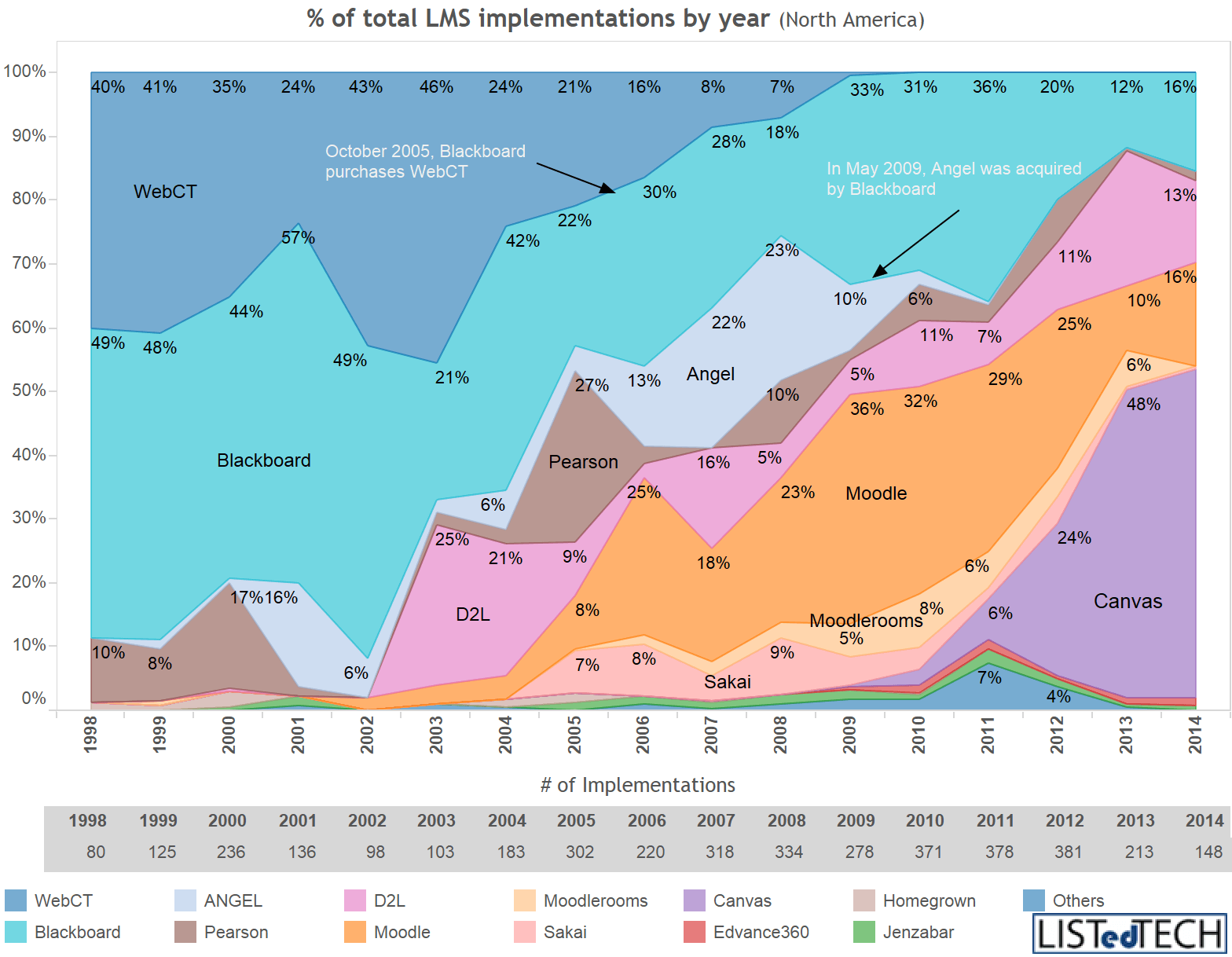Justin Menard and his team at ListEdTech have produced a great new visual on the LMS market in North America. Using his wiki-based data with 4,000+ institutions, he shows the percentage of LMS implementations per year (scaled to 100% for each year). While we are used to seeing LMS market share in terms of number or percentage of institutions using each LMS as primary system, this view highlights the dynamics of the market – which systems are getting adopted. See original post for full chart and additional description.
A few notes:
- We’ve come a long way since the days of simple bar charts for market data.
- Keep in mind that this data shows new implementations and not LMS decisions, per se. If a school goes through an RFP process and selects their current vendor, this data will likely not show up as a new implementation.
- Also keep in mind that while 4,000 institutions is impressive, it is not exhaustive and not bias-free. Read this as the best data available on new implementations, painting a picture of trends in the market. Note the description at the bottom of Justin’s post on limitations of the data.
- We have covered at e-Literate that Blackboard’s Moodle-based clients are growing in number (over 1,400 as of this fall), especially outside of the US. But note that this growth is not occurring in North America.
- The dominant player in the market is obviously Canvas. As of last year (and I expect that 2015 will be even stronger for Instructure, maker of Canvas), Canvas has more North American new implementations that Blackboard, Moodle, and D2L combined. We have not seen this dominance of new implementations since Blackboard back in the 1998 – 2002 years when the market was a land grab.
- Notice how Blackboard, WebCT, and ANGEL are all colored shades of blue – based on Blackboard’s acquisition of the other two companies. This allows you to also see the combined company effect.
More description of the data in the original post.

[…] Via Phil Hill: “New Visual From LISTedTECH Shows LMS Market By New Implementations.” […]